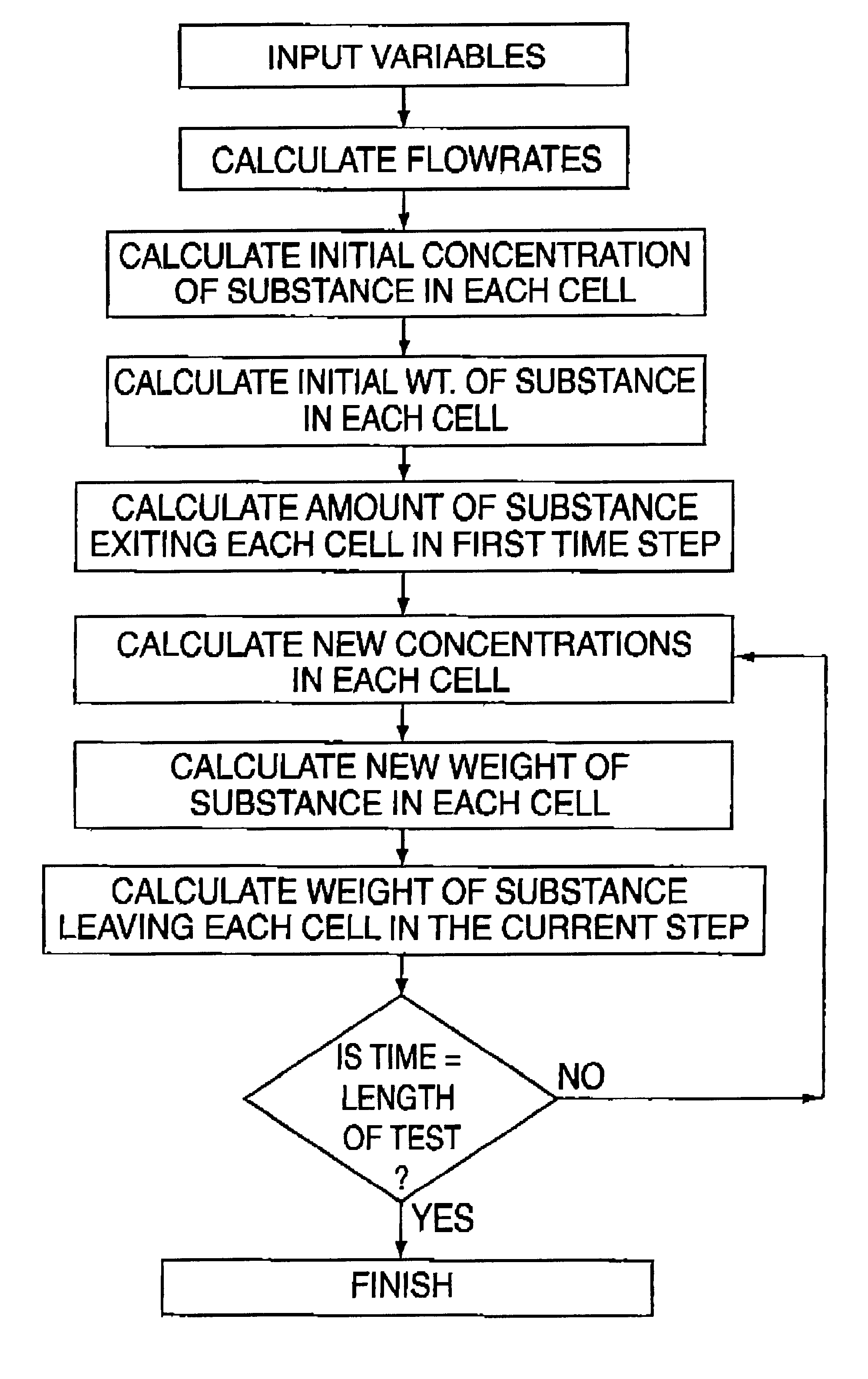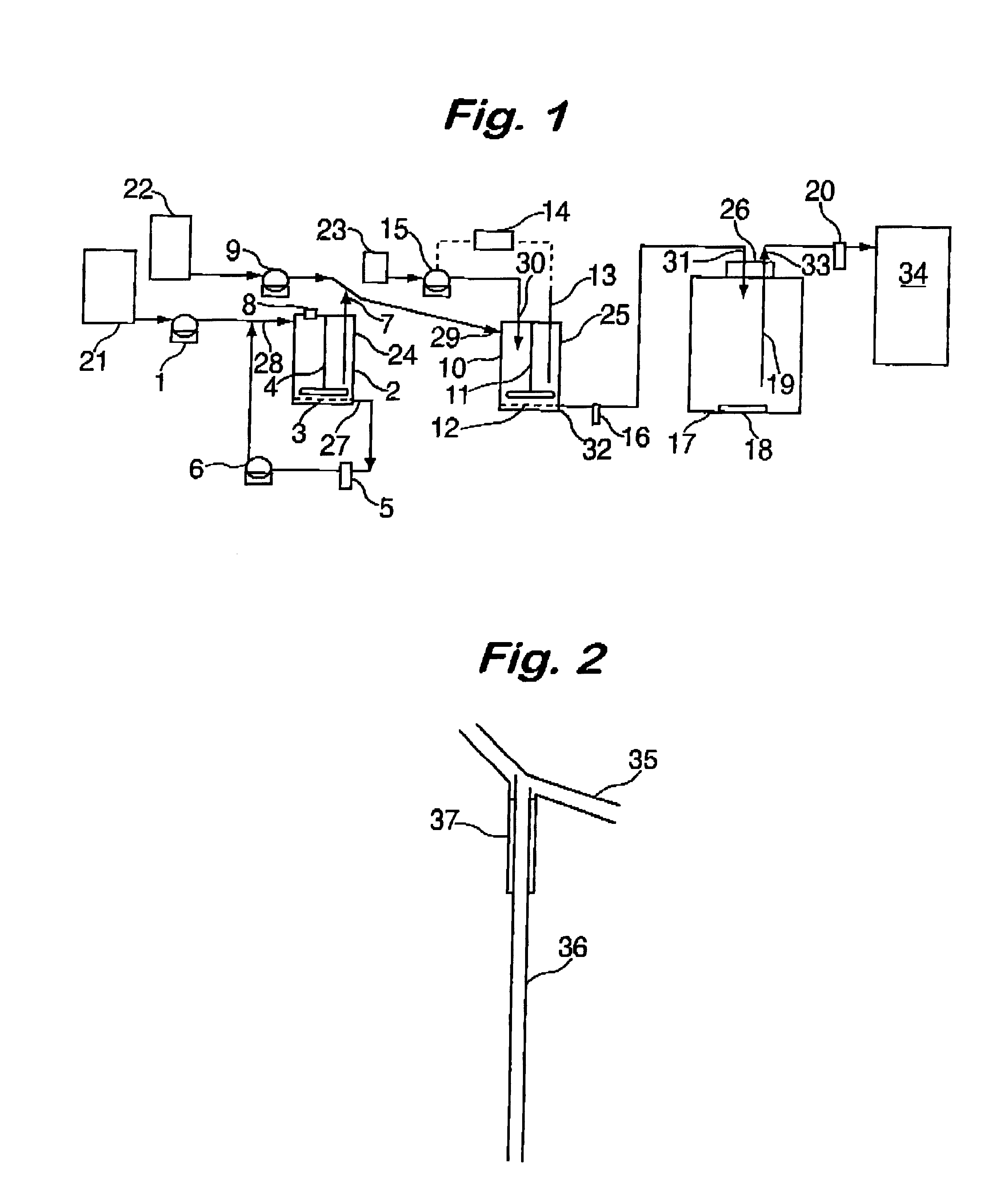Dissolution test equipment and method
a technology of dissolution test and equipment, applied in the direction of machines/engines, chemical property prediction, instruments, etc., can solve the problems of limiting the principle behind the usp dissolution test, the least useful level b correlation for regulatory purposes, and the lack of useful rank order correlations for regulatory purposes, so as to reduce the time required and reduce the development time of the test method
- Summary
- Abstract
- Description
- Claims
- Application Information
AI Technical Summary
Benefits of technology
Problems solved by technology
Method used
Image
Examples
example 2
Three Cell Dissolution Test Using Ibuprofen
The three cell equipment of this invention was operated as follows. The release media were simulated gastric fluid, (as per USP24, without pectin) and simulated intestinal fluid (as per USP24, pH 7.4). The pH in the second cell was controlled at 7.4+ / -0.02. The flow rates and volumes were adjusted so that the residence times in the gastric, intestinal, and circulatory chambers were 20, 16, and 168 minutes respectively. The uv absorbance was measured at 265 nm. One 200 mg sugar coated ibuprofen tablet (200 mg Advil.RTM.) was used. The data from this experiment is summarized in Table 2 and compared with in vivo data reported in Clin. Drug Invest. Volume 21, pages 73-78, 2001 for the same dosage from. The correlation coefficient for this comparison was 0.993 and the t.sub.max values correspond. This example demonstrates that the invention gives excellent correlation with in vivo data.
example 3
Three Cell Dissolution Test Using Diclofenac Sodium
The three cell equipment of this invention was operated as follows. The release media were simulated gastric fluid, (as per USP24, without pectin) and simulated intestinal fluid (as per USP24, pH 7.4). The pH in the second cell was controlled at 7.4+ / -0.02. the uv absorbance was measured at 276 nm. The flow rates and volumes were adjusted so that the residence times in the gastric, intestinal, and circulatory chambers were each 35 minutes. 50 mg of diclofenac sodium was added to the first cell. The data from this experiment is summarized in Table 1 and compared with in vivo data reported in U.S. Pat. No. 4,510,128. The correlation coefficient for this comparison was 0.960 and the t.sub.max values correspond. This example demonstrates the improvement of the 3-cell system over the single cell system (Example 1).
example 4
Three Cell Dissolution Test Using a Diclofenac Resinate
The conditions of Example 3 were repeated except that a complex of diclofenac and an anion exchange resin (prepared as described in U.S. Pat. No. 4,510,128, Example 1(a)). This formulation gives an extended release of the active ingredient. The amount used was equivalent to 50 mg of diclofenac sodium. The results of this test are given in Table 3 and compared with in vivo data provided in said patent. The correlation coefficient for this comparison is 0.82 and the t.sub.max values are very similar. This example demonstrates the predictability of the invention in that test conditions determined in one dosage form, in this case an immediate release formulation, give results with good IVIVC for a different dosage form of the same active ingredient, in this case an extended release formulation.
PUM
| Property | Measurement | Unit |
|---|---|---|
| flow rate | aaaaa | aaaaa |
| temperature | aaaaa | aaaaa |
| temperature | aaaaa | aaaaa |
Abstract
Description
Claims
Application Information
 Login to View More
Login to View More - R&D
- Intellectual Property
- Life Sciences
- Materials
- Tech Scout
- Unparalleled Data Quality
- Higher Quality Content
- 60% Fewer Hallucinations
Browse by: Latest US Patents, China's latest patents, Technical Efficacy Thesaurus, Application Domain, Technology Topic, Popular Technical Reports.
© 2025 PatSnap. All rights reserved.Legal|Privacy policy|Modern Slavery Act Transparency Statement|Sitemap|About US| Contact US: help@patsnap.com



